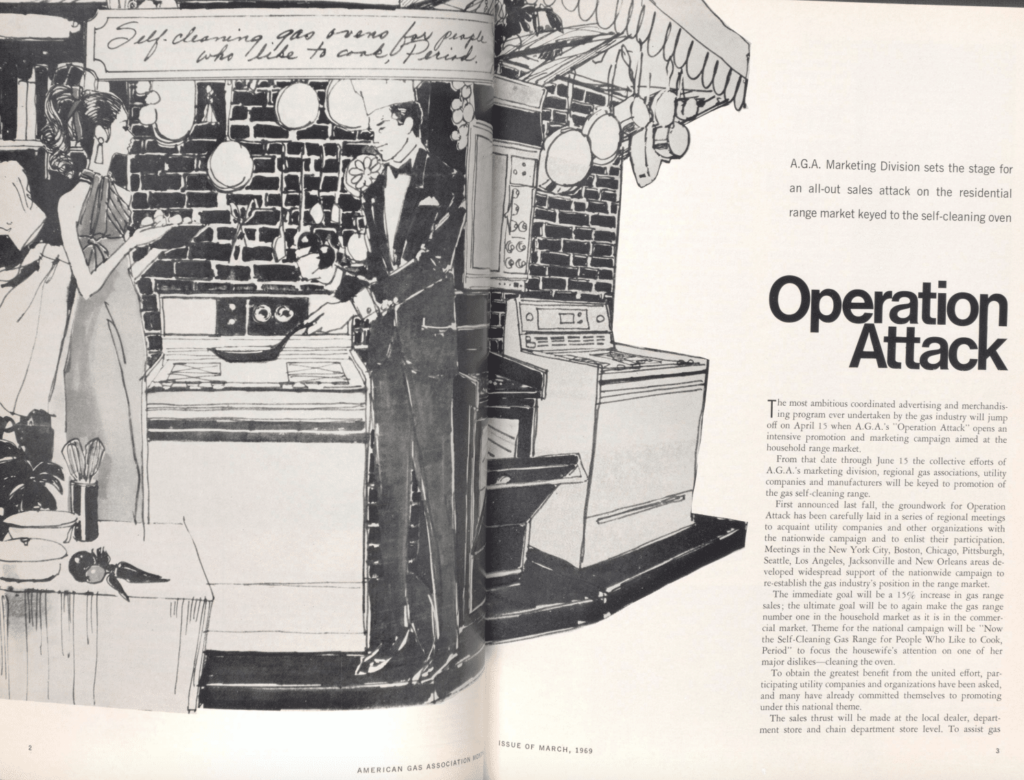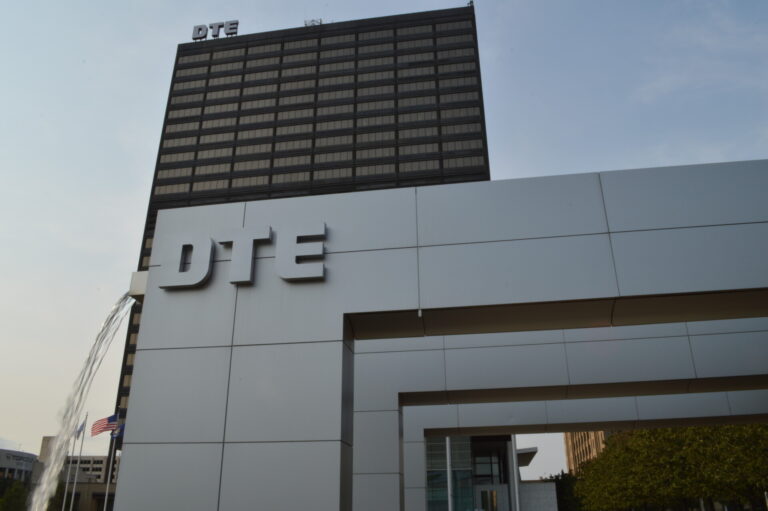Gas utilities evaded federal stove regulations with Big Tobacco tactics

Gas utilities fended off federal regulations of gas stoves by deploying the same tactics as the tobacco industry to undermine public health research, according to a new report published by the Climate Investigations Center.
NPR published a story featuring the report, including exclusive interviews with some of the first scientists to identify the health risks of gas stove emissions as early as the 1970s. A Morning Edition segment aired on Monday, October 24th.
Dr. Carl Shy, one of the NPR interviewees, published epidemiological research in 1970 which found that young children were more susceptible to respiratory ailments if they lived in a house with gas stoves.
In response, the American Gas Association (AGA) hired Battelle Laboratories, which was simultaneously producing favorable research for Philip Morris and other tobacco industry clients. Battelle’s research found “no significant difference in reported respiratory illness between the members of households cooking with gas and those cooking with electricity.” Tobacco industry records show Batelle reliably provided research “consistent with the Sponsor’s interests and wishes.”
In many instances, Battelle, AGA, or other gas industry organizations were not disclosed as funders of the research that the industry then used to downplay gas stove risks and calls for indoor air pollution regulation, according to the CIC report.
Industry-funded epidemiological studies finding no or minimal health risks from gas stoves grew into the 1980s as federal regulators contemplated setting nitrogen dioxide standards. By the time the Environmental Protection Agency performed a literature review for the National Ambient Air Quality Standards for Nitrogen Dioxide in 1982 and 1985, over half of the studies examined were industry-funded. All of the non-industry-funded studies found respiratory risks, except for a single outlier study that only looked at adults.
To this day, no U.S. federal indoor air pollution standards are in place.
Epidemiological studies came at an inconvenient time in the 1970s and the 2020s

The epidemiological research in the 1970s came at an inconvenient time for gas utilities as several other crises threatened the industry’s plans for growth.
In 1969, the gas industry launched a marketing campaign called “Operation Attack” to greatly expand the number of gas stoves in U.S. homes. The nationwide public relations campaign to boost gas range sales involved national television commercials, consumer and trade magazine advertisements, along with sales promotions and consultation with appliance retailers, the CIC report documented. It was described as “the most ambitious advertising and merchandising program ever undertaken by the gas industry.” As is still the case today, the gas stove has long acted as a gateway appliance to convince homeowners to connect their homes to the gas distribution grid.
Dr. Shy’s research, which was featured in the New York Times and escalated calls for legislative action, risked putting a damper on AGA’s growth strategy.
In 1972, Richard Darrow, an executive at the prominent PR firm Hill & Knowlton, addressed gas industry executives at an annual public relations workshop hosted by AGA and the Interstate National Gas Association of America (INGAA). Darrow recommended that the industry “mount the massive, consistent, long-range public relations programs.” He said they needed to get ahead of bad news “before the critics take the floor.”
Hill & Knowlton, and Darrow in particular, were the masterminds behind the tobacco industry’s public relations strategy.
Gas utilities find themselves in a similar position today, as new public health risks re-emerged and dominated news cycles in 2023. Peer-reviewed research found “12.7 percent of current childhood asthma in the United States can be linked to gas stove use” and a study from Stanford University researchers and PSE Health Energy found Benzene generated from gas stoves can reach levels comparable to second-hand tobacco smoke.
More existentially for gas utilities, many states, including most recently New York, have enacted policies restricting gas hook-ups in new construction, motivated by efforts to reduce the greenhouse gas pollution that causes climate change. Over 100 cities across the country have also passed ordinances to encourage electrification and restrict gas in new construction.
Price spikes in the 1970s and 2020s created further headaches for the gas industry
The crisis facing the gas industry over epidemiological research was compounded further by energy commodities spiking in the 1970s as geopolitical conflicts broke out across the globe.
Skyrocketing oil and gas prices due to geopolitical conflicts of the Cold War meant gas utilities faced skepticism from regulators, politicians, and consumers over the expansion of the gas distribution system, which was still in its infancy in much of the United States.
Methane gas prices increased again in 2022, caused by Russia’s invasion of Ukraine and by the linking of US gas prices with global markets due to increased US LNG exports. The price spikes provided further incentives for policymakers to favor more efficient heat pumps in new construction and retrofits. The Biden Administration directed billions in federal funds to support heat pump installations and Colorado, which was hit especially hard by methane price increases, added its own incentives.
AGA’s responses to modern threats echo tobacco strategy
The American Gas Association responded to the threats by supporting its members’ efforts to pass “preemption legislation,” which prohibits municipalities from restricting gas in construction. It mimics the tobacco industry’s efforts to pass similar legislation that prevented municipalities from banning indoor smoking at public venues, such as restaurants.
The gas industry is also suspected of funding a prominent federal lawsuit by the California Restaurant Association (CRA), which challenged Berkeley, California’s efforts to curtail gas use in new construction. The law firm representing CRA, Reichman Jorgensen, has received millions from Southern California Gas Company (SoCalgas), one of the largest gas utilities in the United States, according to an investigation by The Sacramento Bee. SoCalGas disputes its payments to Reichman funded the Berkeley lawsuit.
Funding hospitality organizations, particularly the restaurant industry, was a strategy that Philip Morris employed to keep an arm’s length distance from their fight against “smoke free environments,” according to tobacco industry historians and experts.
In early 2022, a New York Times investigation highlighted an incident in which a toxicologist from Gradient Corporation downplayed the risks of gas stoves in oral testimony to the Multnomah County Board of Supervisors, without disclosing her organization’s financial ties to AGA. Like Battelle in the 1970s, Gradient Corporation has provided favorable studies to the tobacco industry since the mid-1980s. AGA has also sent letters written by Gradient to the American Medical Association (AMA) in an attempt to change the organization’s warnings to the medical community about health risks from gas stoves. AMA has not changed that position.
AGA also has promoted a 2013 report based on the International Study of Asthma and Allergies in Childhood (ISAAC) that used survey data to conclude that no association existed between gas cooking and lifetime asthma or current asthma, compared to children who lived in households with electric stoves. That study was based on a global survey and not on measured concentrations of NO2 in the home. A co-author of the study said that AGA has misused the study. “That’s not a good use of our study,” environmental epidemiology professor Bert Brunekreef told E&E News.
Brunekreef conducted a separate analysis in 2013, published in the International Journal of Epidemiology, which found that in children, gas cooking increased the risk of asthma. Despite the criticism, AGA used that study in social media advertisements earlier this year when the Consumer Product Safety Commission opened a docket in March to review both the information on the hazards associated with gas ranges and proposed solutions.
AGA under pressure as utilities face pressure to jump ship and lawmakers band recovery dues
Eversource, the largest owner of utilities in New England, left the American Gas Association over differences in climate policy earlier this year, according to WBUR. Eversource has sought to distance itself in recent years from AGA’s climate policies, including AGA’s advocacy against a recent Department of Energy water heating efficiency rule. Eversource also left the Consortium to Combat Electrification, housed in the AGA-affiliated Energy Solutions Center, after a story about its membership was published in the E&E News.
Calls for more utilities to follow Eversource’s lead have emerged across the United States. Consumer and climate organizations have called on Pacific Gas and Electric and Puget Sound Energy to leave AGA.
Four states, Connecticut, Colorado, Maine, and New York, have recently passed legislation prohibiting utilities from charging ratepayers for their dues to trade associations, including AGA. Ohio lawmakers have introduced similar legislation, and the Louisiana Public Service Commission opened a docket to explore utilities’ political and advocacy spending that sets the stage for implementing similar restrictions. U.S. Representative Kathy Castor also introduced legislation that directs the Federal Energy Regulatory Commission to prohibit utilities from recovering political expenses, including trade association dues, from ratepayers through wholesale transmission rates, which are separate from the rates regulated by state public utility commissions.



